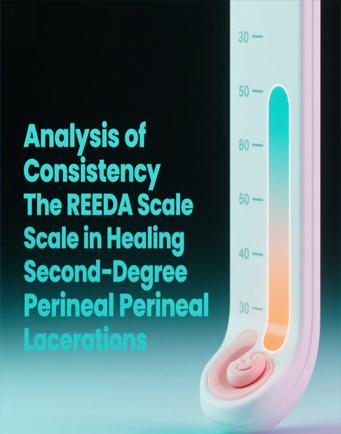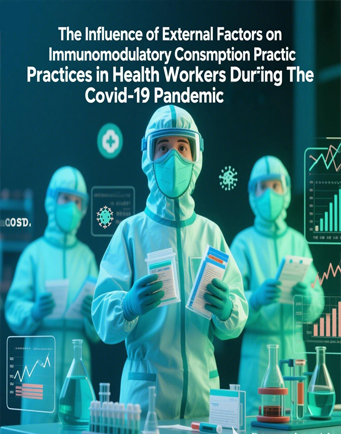The Role of Ergonomic Interventions in Enhancing Employee Well-being: A Case Study from the Hospitality Industry

Downloads
The impact of ergonomic interventions and multitasking on employee well-being, particularly in high-demand hospitality settings, explores how these factors interact with perceived organizational support, an essential mediator that could influence employee satisfaction, health, and productivity. This study aims to discover the relationships among ergonomic interventions, multitasking, perceived organizational support, and employee well-being, focusing on employees of the Puri Saron Hotel Group in Bali. The study employs a quantitative methodology, utilizing SEM SmartPLS 3 software. Data was collected over questionnaires spread to a sample of 100 employees, following Slovin’s formula. The findings contribute to the growing field of workplace ergonomics by demonstrating that both physical ergonomic interventions positively, with the with the highest significant impact, and followed by multitasking for employee well-being, as the study is focused on a single hospitality group, the generalizability of the results may be limited. The enhancing ergonomic conditions and multitasking abilities, coupled with strong organizational support, can significantly improve employee well-being, particularly in industries with high physical and cognitive demands. this offering valuable insights into the role of perceived organizational support in mediating these relationships.
Castaño Cardenas, D. (2023). Health and Safety at Work: Importance of the Ergonomic Workplace. SCT Proceedings in Interdisciplinary Insights and Innovations, 1, 83. https://doi.org/10.56294/piii202383
CDC. (2024, February 20). Healthy Weight and Growth. U.S Centers for Disease Control and Prevention. Retrieved from: https://www.cdc.gov/healthy-weight-growth/about/index.html
Chinedu, O. O., Henry, A. T., Nene, J. J., & Okwudili, J. D. (2020). Work-related musculoskeletal disorders among office workers in higher education institutions: A cross-sectional study. Ethiopian Journal of Health Sciences, 30(5), 715-724. https://doi.org/10.4314/ejhs.v30i5.10
Chin, W. W. (1988). The partial least squares approach to structural equation modeling. In G. A. Marcoulides (Ed.), Modern methods for business research . Lawrence Erlbaum Associates.
Countouris, N., & De Stefano, V. (2023). The future of remote work. Osgoode Legal Studies Research Paper, (4462532), 93-103.
George, T., & Merkus., J. (2023, November 20). Explanatory Research | Definition, Guide, & Examples. Scribbr. Retrieved from: https://www.scribbr.com/methodology/explanatory-research/
Hair, J., & Alamer, A. (2022). Partial Least Squares Structural Equation Modeling (PLS-SEM) in second language and education research: Guidelines using an applied example. Research Methods in Applied Linguistics, 1(3), 100027. https://doi.org/10.1016/j.rmal.2022.100027
Hair, J. F., Babin, B. J., & Krey, N. (2017). Covariance-Based Structural Equation Modeling in the Journal of Advertising : Review and Recommendations. Journal of Advertising, 46(1), 163–177. https://doi.org/10.1080/00913367.2017.1281777
Hair, J. F., Black, W. C., Babin, B. J., & Anderson, R. E. (2010). Multivariate data analysis (7th ed.). Pearson.
Hair, J. F., Risher, J. J., Sarstedt, M., & Ringle, C. M. (2019). When to use and how to report the results of PLS-SEM. European Business Review, 31(1), 2–24. https://doi.org/10.1108/EBR-11-2018-0203
Hollweck, T. (2015). Robert K. Yin. (2014). Case Study Research Design and Methods (5th ed.). Canadian Journal of Program Evaluation, 30(1), 108–110. https://doi.org/10.3138/cjpe.30.1.108
Huang, Y.-H., Lee, J., McFadden, A. C., Murphy, L. A., Robertson, M. M., Cheung, J. H., & Zohar, D. (2016). Beyond safety outcomes: An investigation of the impact of safety climate on job satisfaction, employee engagement and turnover using social exchange theory as the theoretical framework. Applied Ergonomics, 55, 248–257. https://doi.org/10.1016/j.apergo.2015.10.007
Irwanti, N. K. D. (2018). Redesain Alat Kerja Berbasis Antropometri Orang Bali Dan Remodeling Sikap Kerja Menurunkan Postural Stres Pramugraha Hotel Puri Saron Seminyak-Kuta Bali. Jurnal Manajemen Pelayanan Hotel, 2(2), 106. https://doi.org/10.37484/jmph.020206
Irwanti, N. K. D., & Wisnawa, I. M. B. (2023). Analisis Faktor Ergonomi Terhadap Stres Kerja Dan Dampaknya Terhadap Kinerja Karyawan Front Office Hotel Di Bali. Journal of Applied Management Studies, 4(2). Retrieved from: https://jamms.triatmamulya.ac.id/index.php/JAMMS/article/view/82
Keng, S.-L., Smoski, M. J., & Robins, C. J. (2011). Effects of mindfulness on psychological health: A review of empirical studies. Clinical Psychology Review, 31(6), 1041–1056. https://doi.org/10.1016/j.cpr.2011.04.006
Koirala, R., & Maharjan, K. (2022). Cognitive Ergonomics on Employee Wellbeing: A Literature Review. The Journal of Economic Concerns, 13(1), 93–106. https://doi.org/10.3126/tjec.v13i1.57064
Lachowicz, M. J., Preacher, K. J., & Kelley, K. (2018). A novel measure of effect size for mediation analysis. Psychological Methods, 23(2), 244–261. https://doi.org/10.1037/met0000165
Maan, A. T., Abid, G., Butt, T. H., Ashfaq, F., & Ahmed, S. (2020). Perceived organizational support and job satisfaction: a moderated mediation model of proactive personality and psychological empowerment. Future Business Journal, 6(1), 21. https://doi.org/10.1186/s43093-020-00027-8
Marková, P., & Škurková, K. L. (2023). The Impact of Ergonomics on Quality of Life in the Workplace. System Safety: Human - Technical Facility - Environment, 5(1), 121–129. https://doi.org/10.2478/czoto-2023-0014
Mariani, I. L., & Kartika, I. M. (2018). Pengaruh Stres Kerjad Lingkungan Kerja Fisik Terhadap Kinerja Karyawan Pada Puri Saron Madangan Hotel di Kabupaten Gianyar. Jurnal Manajemen Dan Bisnis Equilibrium, 4(1), 70–81. https://doi.org/10.47329/jurnal_mbe.v4i1.307
Ogbeibu, S., Chiappetta Jabbour, C. J., Burgess, J., Gaskin, J., & Renwick, D. W. S. (2022). Green talent management and turnover intention: the roles of leader STARA competence and digital task interdependence. Journal of Intellectual Capital, 23(1), 27–55. https://doi.org/10.1108/JIC-01-2021-0016
Okezue Obinna Chinedu, Anamezie Toochukwu Henry, John Jeneviv Nene, & John Davidson Okwudili. (2020). Work-Related Musculoskeletal Disorders among Office Workers in Higher Education Institutions: A Cross-Sectional Study. Ethiopian Journal of Health Sciences, 30(5).
Prabawa, K. S., Sudjana, I. M., & Koeswiyono, D. P. (2023). The Influence of Work Attemption on Employee Performance at Puri Saron Lovina Hotel. Jurnal Ilmiah Pariwisata Dan Bisnis, 2(4), 924–940. https://doi.org/10.22334/paris.v2i4.389
Reddy, Gopireddy, M. M., Nisha, B., Prabhushankar, T., & Vishwambhar, V. (2016). Musculoskeletal morbidity among construction workers: A cross-sectional community-based study. Indian Journal of Occupational and Environmental Medicine, 20(3), 144. https://doi.org/10.4103/0019-5278.203134
Ryan, R. M., & Deci, E. L. (2000). Self-determination theory and the facilitation of intrinsic motivation, social development, and well-being. American Psychologist, 55(1), 68–78. https://doi.org/10.1037/0003-066X.55.1.68
Ryan, T. (2013). Sample Size Determination and Power. John Wiley and Sons.
Santos, A. M., & Skiavan, A. da S. (2023). Ergonomics at work – Health and well-being of workers. Uniting Knowledge Integrated Scientific Research For Global Development. Seven Editora. https://doi.org/10.56238/uniknowindevolp-087
Santos, A. A. dos, & Reis, L. P. (2021). The impacts of the lack of ergonomic vision in mining equipment design projects on the health of workers in the maintenance sector. Research, Society and Development, 10(14), e158101421933. https://doi.org/10.33448/rsd-v10i14.21933
Schermelleh-Engel, K., Moosbrugger, H., & Müller, H. (2003). Evaluating the Fit of Structural Equation Models: Tests of Significance and Descriptive Goodness-of-Fit Measures. Methods of Psychological Research, 8(2), 23–74. Retrieved from: https://doi.org/10.23668/psycharchives.12784
Shiri, R., Nikunlaakso, R., & Laitinen, J. (2023). Effectiveness of Workplace Interventions to Improve Health and Well-Being of Health and Social Service Workers: A Narrative Review of Randomised Controlled Trials. Healthcare, 11(12), 1792. https://doi.org/10.3390/healthcare11121792
Soares, C. O., Pereira, B. F., Gomes, M. V. P., Marcondes, L. P., Gomes, F. de C., & Neto, J. S. de M.-. (2019). Fatores de prevenção de distúrbios osteomusculares relacionados ao trabalho: revisão narrativa. Revista Brasileira de Medicina Do Trabalho, 17(3), 415–430. https://doi.org/10.5327/Z1679443520190360
Tullis, T., & Albert, B. (2013). Measuring the User Experience. Elsevier. https://doi.org/10.1016/C2011-0-00016-9
WHO. (1948). Constitution of The World Health Organization. WHO. Retrieved ftom: https://apps.who.int/gb/bd/PDF/bd47/EN/constitution-en.pdf?ua=1
Wollter Bergman, M., Berlin, C., Babapour Chafi, M., Falck, A.-C., & Örtengren, R. (2021). Cognitive Ergonomics of Assembly Work from a Job Demands–Resources Perspective: Three Qualitative Case Studies. International Journal of Environmental Research and Public Health, 18(23), 12282. https://doi.org/10.3390/ijerph182312282
Worley, J. A., Fuqua, D. R., & Hellman, C. M. (2009). The survey of perceived organisational support: Which measure should we use?. SA Journal of Industrial Psychology, 35(1), 1-5. https://hdl.handle.net/10520/EJC89181
Yamane, Taro. (1976). Statistics: An Introductory Analysis (2nd ed.). Harper and Row.
Yazdani, A., & Wells, R. (2018). Barriers for implementation of successful change to prevent musculoskeletal disorders and how to systematically address them. Applied Ergonomics, 73, 122–140. https://doi.org/10.1016/j.apergo.2018.05.004
Zhang, B., Yin, X., Li, J., & Tong, R. (2024). Incorporating ergonomic and psychosocial stressors: A comprehensive model for assessing miners’ work-related musculoskeletal disorders. Safety Science, 176, 106564. https://doi.org/10.1016/j.ssci.2024.106564
Copyright (c) 2024 JURNAL INFO KESEHATAN

This work is licensed under a Creative Commons Attribution-NonCommercial-ShareAlike 4.0 International License.
Copyright notice
Ownership of copyright
The copyright in this website and the material on this website (including without limitation the text, computer code, artwork, photographs, images, music, audio material, video material and audio-visual material on this website) is owned by JURNAL INFO KESEHATAN and its licensors.
Copyright license
JURNAL INFO KESEHATAN grants to you a worldwide non-exclusive royalty-free revocable license to:
- view this website and the material on this website on a computer or mobile device via a web browser;
- copy and store this website and the material on this website in your web browser cache memory; and
- print pages from this website for your use.
- All articles published by JURNAL INFO KESEHATAN are licensed under the Creative Commons Attribution 4.0 International License. This permits anyone to copy, redistribute, remix, transmit and adapt the work provided the original work and source is appropriately cited.
JURNAL INFO KESEHATAN does not grant you any other rights in relation to this website or the material on this website. In other words, all other rights are reserved.
For the avoidance of doubt, you must not adapt, edit, change, transform, publish, republish, distribute, redistribute, broadcast, rebroadcast or show or play in public this website or the material on this website (in any form or media) without appropriately and conspicuously citing the original work and source or JURNAL INFO KESEHATAN prior written permission.
Permissions
You may request permission to use the copyright materials on this website by writing to jurnalinfokesehatan@gmail.com.
Enforcement of copyright
JURNAL INFO KESEHATAN takes the protection of its copyright very seriously.
If JURNAL INFO KESEHATAN discovers that you have used its copyright materials in contravention of the license above, JURNAL INFO KESEHATAN may bring legal proceedings against you seeking monetary damages and an injunction to stop you using those materials. You could also be ordered to pay legal costs.
If you become aware of any use of JURNAL INFO KESEHATAN copyright materials that contravenes or may contravene the license above, please report this by email to jurnalinfokesehatan@gmail.com
Infringing material
If you become aware of any material on the website that you believe infringes your or any other person's copyright, please report this by email to jurnalinfokesehatan@gmail.com.





































